New trends and innovations continually disrupt industries, and the tourism industry is no exception. Keeping pace with these emerging tourism trends can help businesses stay competitive and cater to customers’ needs. Some of these trends have been a direct or indirect result of the COVID-19 pandemic. Read on to learn more about the key trends within tourism for 2026.
Table of Contents:
- Keeping up with the Latest Tourism Trends: Why It Matters to Your Business
- The Factors Responsible for Upcoming Tourism Trends
- 25 Opportunities and Tourism Trends for 2026
- 1. Wellness & Retreat Tourism
- 2. Solo Travel
- 3. Eco Travel
- 4. Local Experience
- 5. Transformative Travel
- 6. Sleep Tourism
- 7. Personalization
- 8. Indigenous Tourism
- 9. Healthy and Organic Food
- 10. Nostalgic Travel Options
- 11. Safety & Hygiene Tourism Trends
- 12. Artificial Intelligence
- 13. Robots, Chatbots, and Automation
- 14. Internet of Things (IoT)
- 15. Recognition Technology
- 16. Voice Search & Voice Control
- 17. Growth of Contactless Payments
- 18. Customer Experience 2.0
- 19. Virtual Reality Tourism Trends
- 20. Augmented Reality (AR)
- 21. Virtual Reality & Metaverse Travel
- 22. Bleisure Travel
- 23. Immersive Cultural Stays
- 24. Set-Jetting
- 25. Celebratory Travel
- What Are the Biggest Tourism Trends Related to Marketing?
- What Are the Biggest Tourism Trends Related to Technology?
- Learn More About Tourism Trends Through Tourism Courses
Keeping up with the Latest Tourism Trends: Why It Matters to Your Business
Whatever aspect of the tourism sector your business is involved in, you need to keep your finger on the pulse. Formerly beloved concepts and products go out of style, replaced by more modern elements that capture more of the market. New destinations, new technologies, and means of transport have caused major shifts in the industry. Early adoption of new trends is vital.
Travelers are moving beyond traditional sightseeing toward immersive, experience-driven trips that align with personal values and sustainability goals. This shift fuels demand for authentic local encounters, eco-friendly stays, and unique events. At the same time, the rise of sports tourism and the draw of major international events such as the 2026 FIFA World Cup and the 2028 Olympic Games are creating new opportunities for growth.
According to the World Travel & Tourism Council’s Economic Impact Research, international visitor spending is projected to reach $2.1 trillion, with global tourism contributing $11.7 trillion to the economy, accounting for 10.3% of global GDP.
Julia Simpson, WTTC President & CEO, spotlights the sector’s strength:
“People are continuing to prioritize travel. That’s a powerful vote of confidence in our sector and a sign of its enduring strength. But while tourism is strong, the recovery remains uneven. Whilst some regions are producing record-breaking numbers, other large economies are plateauing.”
The Factors Responsible for Upcoming Tourism Trends
A trend can be defined as a generalized change in a situation or behavior, or a general direction in which things are transpiring. Several developments in tourism have led to changes in consumer behavior and business processes, meaning they are responsible for emerging tourism trends.
One of these developments has been a fundamental change in technology use, especially in artificial intelligence and machine learning. This has led to the increased adoption of robotics and AI-powered technology in hotels. It has also led to changes in customer behavior through the rise of voice control and search. Oracle NetSuite reports that AI adoption and investment in the hospitality industry are expected to increase 60% per year over the decade.
After the COVID-19 pandemic, travelers still focus more on hygiene and safety, needing contactless payments and remote working. Meanwhile, environmental concerns have added to the local-first approach of many customers and have given rise to trends related to organic food and eco-travel.
25 Opportunities and Tourism Trends for 2026
Following the current tourism trends in response to increasing consumer actions due to the coronavirus pandemic is essential. However, most patterns have arisen from more general shifts in customer behavior. Below, you can see both general hospitality developments and ways to respond to the coronavirus pandemic. There are various tourism trends based on more general changes in consumer behavior, like the need for healthy and organic food & drinks, sustainability, personalized service, the rising demand for digitalization, and the use of technology.
1. Wellness & Retreat Tourism Trends
Few tourism trends are growing as rapidly as wellness and retreat tourism, according to the Wellness Tourism Market research report by Fact.MR, the global wellness tourism market is expected to reach $2.3 trillion by the end of 2033. This kind of tourism can be described as being primarily motivated by self-improvement. It typically involves traveling in a way that contributes positively to a tourist’s physical and mental health or knowledge and awareness.
Wellness and retreat tourism take many forms, from visiting meditation retreats or yoga retreats to staying at health spas or healthy eating retreats. In the past, vacations were often seen as a time to let go and indulge in food and alcohol, but many modern tourists actively seek trips to escape everyday temptations.
According to Booking.com Travel Predictions, more than half of American travelers are prioritizing vacations designed to enhance their lifespan and well-being. Wellness trips are projected to rise to 8.3% of all tourism trips by 2027, according to Global Wellness Institute Economy Report.
Catherine Warren, Vice President of Strategic Partnerships at Arch Amenities Group, shares insight into tourism trends:
“Looking to the next year, wellness travel will be shaped by hyperpersonalization, sustainability, and the growing demand for hybrid wellness experiences. The future of wellness will increasingly be driven by data and personalization. Spas are investing in technology that allows for highly tailored wellness experiences based on individual needs and preferences.”
Example: Tapping Into The Wellness Tourism Boom
2. Solo Travel
Leisure travel was a family affair or something that couples undertook together. While that’s still the case for many, more and more people are choosing to strike out on their own. Enjoying a solo trip is no longer so unusual, and tourist trends increasingly reflect this.
According to Grand View Research, the global solo travel market size is projected to reach USD 1.07 trillion by 2030, growing at a CAGR of 14.3%. Currently, solo travelers account for 11% of the overall travel market. The needs of solo travelers are diverse.
Some want to travel without the distraction of a companion. Others are young singles looking for social activities or to find a partner. Some widowed seniors even use long-term hotel stays or cruises as a luxurious alternative to conventional elder care. These tourism trends are set to grow and grow. Booking.com’s survey found that 59% of travellers plan to take a solo trip, and hotels are responding with targeted amenities and design changes.
Video: 15 Perfect Destinations For Any Solo Traveler
3. Eco-Travel
The concerns and mores of the customer base heavily influence tourism trends. As a new generation becomes increasingly relevant in the marketplace, the ideals driving their purchasing decisions create new tourism trends. Eco-travel is just one example of these tourism trends, reflecting a growing concern among today’s travelers for ethical and sustainable tourism options, and it is only growing. According to the Ecotourism Global Market Report by Research and Markets, the global ecotourism market is expected to reach $331.62 billion by 2027.
A Booking.com Travel Report found that 83% of travelers consider sustainable travel important, and Trip.com reports that 21% of travelers are willing to pay up to 5% more for sustainable options.
Eco travel includes simple changes, such as the availability of carbon credits when booking a flight or the option to rent an electric instead of a conventional vehicle. More sophisticated examples might include tourism with a volunteer element, perhaps working on a nature reserve or engaging in conservation work.
Hotels are stepping up. For example, Hilton became the first major hospitality company to set science-based targets to cut greenhouse gas emissions, with goals of reducing emissions intensity by 75% in managed hotels and 56% in franchised hotels by 2030. Since 2008, Hilton has already reduced carbon emissions and waste by 30% and water consumption by 20%, saving over $1 billion. Industrywide, the Sustainable Hospitality Alliance now includes over 60 hotel companies, representing 4.5 million rooms, around 25% of global hotel inventory.
Video: Ecotourism – A Sustainable Way To Travel
4. Local Experience
Today’s tourists don’t want to be insulated from the places they visit inside a cultural bubble. They want to engage with and participate in the local culture. From enjoying local cuisine to celebrating regional festivals and holidays, local experiences are set to become some of the top tourist trends to watch. Almost two-thirds of travelers today said they often or always book a hotel based on access to local experiences, according to Hilton’s Traveler report.
One example of a popular local experience would be visiting Japan during a major festival, renting formal Japanese clothes to wear, consuming regional delicacies, and engaging in traditional games or cultural activities. Another might be a long stay with a host family in the destination country to learn more about the local culture.
Video: A Local Travel Guide of Amsterdam
5. Transformative Travel
Transformative travel, or transformational travel, is one of the major tourism trends gaining traction at the current time and describes trips that are intended to inspire growth and create lasting change in a person. A strong emphasis is placed on learning, gaining new perspectives, and making lasting lifestyle changes.
Many transformative travel experiences are organized by companies in the tourism industry and connect people from different cultures, so they can exchange customs and ideas. This form of travel is often connected to ideas like religious tourism, ecotourism, and sustainable tourism, but with a stronger emphasis on self-improvement.
Research from Washington State University’s Carson College of Business shows the motivations driving these trips: 21% of Americans travel for adventure, 14% for entertainment and nightlife, and 12% for cultural immersion, while nearly one in three prioritize wellness as part of their travel plans.
Arjan Dijk, Senior Vice President and CMO at Booking.com, comments:
“In 2026, travelers will be using their trips to transform themselves, their relationships and ultimately the world around them. A growing proportion of men are seeking getaways that challenge outdated gender expectations and foster mental wellbeing. And almost one in five boomers are refusing to let age keep them from chasing down new adventures. It’s all about breaking travel norms to foster a deeper sense of connection. Technology and imagination are coming together to create a new era of traditions and ultimately make it easier for everyone to shape their own journeys in 2026 and beyond.”
6. Sleep Tourism Trends
Like wellness and retreat tourism trends, sleep tourism is a rapidly growing area of the tourism industry. As the name indicates, this kind of tourism places a strong emphasis on sleep. The aim of sleep tourism is to gain high-quality sleep in sufficient quantity and return from the trip well-rested and ready to tackle everyday life.
The numbers show how fast this segment is growing. The global sleep tourism market size is expected to grow at a CAGR of 12.4% from 2025 to 2030, according to Grand View Research. According to HFTP, sleep tourism will expand by more than $400 billion by 2028, prompting major hotel groups to invest in sleep-focused amenities.
Again, this kind of tourism can take many different forms. Some sleep tourism destinations focus on meditation, while others prioritize soundproof rooms, an absence of technology and distractions, or rooms where light can be fully blocked out. Service providers tend to invest heavily in great beds, duvets, and pillows.
Hyatt, for example, launched a Science Behind Sleep video series in partnership with Headspace mindfulness teacher Dora Kamau and sleep expert Dr. Aric Prather. The educational series is now available in nearly 400 hotels worldwide.
Example: Sleep SPA Tourism
7. Personalization
You’re probably familiar with those ads that pop up on social media and certain other websites, ads related to things you’ve looked at or purchased online. This is just one example of personalization. As well as marketing tourism more effectively, personalization can apply to every aspect of the tourist experience. According to Future Market Insights, customization and personalization in the travel market are projected to grow from USD206.9 million in 2025 to USD 1,064.6 million by 2035, at a CAGR of 17.8%.
Today’s consumers expect experiences that closely match their preferences, from destinations to accommodation and activities they’ll engage in. The more closely an experience can be tailored to a client’s desires and expectations, the more likely they are to return and use the same service again. According to EHL Hospitality Insights, 65% of travellers identified personalization as a key factor in their experience, and they are willing to pay up to 25% more for a personalized stay.

Matthias Dybing, Co-Founder & Director at Nuvho“Personalization ranks among the most important tourism trends to focus on, but the modern popularity of third-party booking platforms hinders personalization efforts. This creates a divide between direct bookers and indirect bookers, even though customers are usually unaware of the difference between the two approaches. Most hotels want to reward customers for making a booking rather than direct bookers for choosing the right method. Yet, with third-party bookings, pre-arrival communication is often restricted, and data is often retained by the third-party platform, not your hotel. To achieve the best customer experience, hotels and third parties must agree to share information that will ultimately benefit the customer through improved personalization.” Click here to read more revenue management tips from our Hospitality Expert Panel. |
Video: Personalized Marketing by Nicole Martin
You can read more detailed information and examples of personalization marketing in tourism in the article “Ways Personalization Marketing is Used in the Tourism Industry.”
8. Indigenous Tourism
Many emerging tourism trends are geared toward making tourism more ethical and less harmful. Another example is the growth of indigenous tourism, which can be described as tourism experiences owned and operated by indigenous people. This helps to ensure these people benefit most from the tourism in their area.
The market’s growth highlights this demand. According to Credence Research, the global indigenous tourism market is projected to grow from USD 44857 million to USD 661994.69 million by 2032, expanding at a CAGR of 4.00%. Traveller’s interest is driving this increase. About 64% of travelers now actively seek opportunities to engage with Indigenous cultures. In some countries, 45% of tourism funding is being directed toward Indigenous tourism projects, underscoring its growing importance.
For tourists, indigenous tourism provides exciting opportunities to take on new experiences in a way that is completely authentic. These experiences could involve staying in traditional accommodations, eating traditional foods, experiencing life in remote locations, or temporarily living as indigenous people do.
Example: Indigenous Tourism Industry
9. Healthy and Organic Food
Healthy food and the kind of fare consumed by tourists used to be antonyms in the minds of many travelers, with holidays traditionally representing a chance to break one’s diet and indulge in forbidden treats. Today’s travelers know that delicious and nutritious are not exclusive concepts. Data Bridge Market Research reports that the health and wellness food market is expected to reach USD 1,989.01 billion by 2032, growing at a CAGR of 9.5% (2025-2032).
Demand for excellent cuisine with a view to better nutrition drives new tourism trends. Modern tourists want to know that their food is as healthy as it is delicious. The organic food movement also affects tourism trends, with more eateries and hotels offering organic options. Other special diets are also represented.
Hotel groups are actively leading this transformation. Brad Nelson, Marriott’s Corporate Chef, told ABC News:
“Moving toward a food program that focuses on nutrition and sustainability is the future. From a scale perspective, we’re really exerting influence and pressure on our suppliers. For example, we’ve been working with one of the major pork producers to supply natural and pure bacon.”
Video: Organic Holiday in Italy
10. Nostalgic Travel Options
Tourism trends are also increasingly being impacted by a generalized thirst for nostalgia among the public, and nostalgic travel options represent a significant opportunity for businesses. Often referred to as “rosy retrospection, “ nostalgia can inform travel decisions in several ways, such as a longing for simpler times and encouraging travelers to book trips to remote locations.
Alternatively, nostalgia could see travelers focus on domestic trips, particularly on places they visited when they were younger. Some travelers may also focus on destinations with which they have a long-established connection, such as through films they have enjoyed, video games they have played, or music they love. This isn’t just a passing sentiment. According to Booking.com Travel Predictions, 88% of travelers want to go on a nostalgic getaway trip.
Some brands are seizing this trend in bold ways. Pan American World Airways, for example, is staging an exclusive 12-day transatlantic journey in 2025, designed to recreate the golden age of air travel. According to Condé Nast Traveler, the $60,000 experience includes curated programs, five-star accommodations, and iconic Pan Am branding woven throughout, giving guests a rare chance to relive a celebrated era in aviation history.
Hotels are also leaning into this sentiment. Graduate by Hilton, introduced into the Hilton portfolio, is built around what the brand calls “newstalgia,” creating new memories that evoke the warmth of old ones. Each hotel welcomes guests in with nostalgic nods to days gone by, channeling the undeniable energy and optimism of university towns.
Table: Types of Nostalgic Travel
11. Safety & Hygiene Tourism Trends
Whether it is airlines, cruises, hotels, restaurants, or bars, since the outbreak of COVID, safety and hygiene standards have been paramount. With this in mind, several tourism trends have emerged, including increased cleaning, socially distanced seating, the provision of hand gel, and the enforcement of masks in certain settings.
This is also now a vital part of tourism marketing, with companies needing to clarify their hygiene and safety policies and measures to keep customers safe. The threat of COVID-19 has meant people are more reluctant to travel and visit tourism hotspots, so they must be persuaded that it is safe. A national AHLA survey found that among nine decision factors, travelers most often ranked cleanliness as the top priority when choosing a hotel. In the same survey, 81% of travelers said they feel more comfortable staying in hotels that have implemented enhanced protocols.
IAQ also impacts the guest experience. Over 77% of travelers say a hotel’s indoor air quality influences their choice of accommodations, and 52% are willing to pay a premium for properties that prioritize air quality, according to Hotel Tech Report.
Major brands are responding with concrete initiatives. For example, Marriott International has launched its Global Cleanliness Council to develop new standards and training. They’ve introduced tools like electrostatic sprayers with hospital-grade disinfectants to sanitize rooms, keys, and high-touch areas, ensuring guests see and feel that safety is a top priority.
Chip Rogers, President and CEO of the American Hotel & Lodging Association, states:
“The hotel industry is united to enhance our already rigorous cleaning protocols for the health and safety of our guests, and it’s working. It’s more important than ever that guests follow our Safe Stay Guest Checklist so they understand what is expected of them, no matter where they stay. Travelers across the country looking to include a hotel stay in their upcoming vacation plans know that with the implementation of Safe Stay, hotels will be safer and cleaner than ever before.”
The “Hygiene is the New Marketing Message for Hotels” post explains this trend in more detail.
12. Artificial Intelligence
As well as the aforementioned chatbots, artificial intelligence is becoming increasingly important to the tourism industry. Machine learning technology is now firmly entrenched in the marketing of the tourism sector, with AI helping to personalize the experience of finding and booking tours and trips. The market potential is significant. Precedence Research projects the global generative AI market in travel will grow from USD 894.33 million in 2024 to USD 5,067.29 million by 2034, at a CAGR of 18.94%.
AI is also increasingly valuable in contexts such as smart hotel rooms, identifying the likely needs of guests, and fine-tuning the environment and services to fit the guests’ needs and preferences. Artificial intelligence is finding applications everywhere, from customer service to security. According to an Oracle + Skift survey, 51.5% of hotel executives plan to deploy AI in marketing over the next three years to better personalize guest experiences. Future AI tourism trends to watch out for might include self-driving vehicles and virtual guides for tourism.
Video: AI for Marketing & Growth
Find more detailed information and examples of artificial intelligence use cases in the tourism industry in the article “How Artificial Intelligence is Changing the Travel Industry.”
13. Robots, Chatbots, and Automation
Robotics and automation are no longer futuristic concepts in tourism; they’re here and transforming how companies operate. One of the more eye-catching examples of these particular tourism trends is Connie, the Hilton Hotel chain’s robot concierge. Other hotels have also gotten in on the robot-staff trend, installing interactive robots to handle certain reception duties or even having them serve food and drink to visitors. Hotel Tech Report notes that chatbots now handle 80% of routine queries, cutting response times by 65%, freeing staff for higher-value interactions, and even increasing upselling revenue by up to 250%.
However, this kind of novelty application is far from the only one. Many customers now book their travel and accommodation with the help of internet chatbots, specifically tailored AI, which can handle queries and assist customers with useful information when human operators are unavailable. For example, Expedia’s chatbot has conducted over 29 million virtual conversations and saved 8 million hours in agent time by allowing travelers to resolve issues faster with self-service. These numbers highlight the tangible impact of AI adoption in the tourism industry.
Video: Alibaba’s ‘Future Hotel’ Uses Robots
In the article “Robots in the Tourism Industry: Real-World Examples”, find more detailed information about how to use robots in the tourism industry.
14. Internet of Things (IoT)
IoT is relevant to many tourism trends. IoT devices are gadgets equipped with a microprocessor and digital connectivity, allowing them to connect to and be controlled from the internet. IoT devices include heating and cooling systems, entertainment systems, and other items often found in a hotel room, giving rise to “smart” hotel rooms.
The IoT is also used to integrate services in a hospitality setting, for example, by allowing guests to book activities (a session in the hotel’s spa, swimming in the pool, training in the gym, etc.) or request such things as room service or extra linen via a hub or a smartphone application. According to Business Research Insights, the global IoT in hospitality market is projected to reach USD 251.6 billion by 2033, growing at a 28% CAGR.
Starfleet Research reports that 76% of hotels have already integrated IoT to improve guest engagement and operations, though 83% have also experienced at least one IoT-related security incident in the past three years.
For example, Marriott International leads in IoT innovation through its Guestroom Lab. The lab integrates voice-activated controls for lighting, temperature, and entertainment, while sensor technology detects movement to light pathways automatically. Smart oxygen management improves air quality based on occupancy. Through a partnership with Amazon Alexa for Hospitality, these features are being rolled out across brands like Westin, St. Regis, Aloft, and Autograph Collection, creating highly personalized guest experiences.
Example: IoT for Airports
Find more detailed information about the ‘Internet of Things’ in the tourism industry in the article “How the Internet of Things (IoT) Can Benefit the Tourism Industry.”
15. Recognition Technology
Recognition technology is one of those increasingly important travel and tourism trends that’s starting to creep into many different areas. Propelled by post-pandemic demand for contactless experiences, 74% of luxury travelers now see touch-free options as essential. One of the most familiar recognition technology applications for a frequent traveler is the bank of automatic gates at some borders. The gates can read the data on the traveler’s passport or ID card and match it to their face using a camera and facial recognition technology.
Recognition technology is one of the big tourism trends in the hospitality industry, with voice recognition becoming increasingly popular as a method of control in smart hotel rooms. Oracle’s Hotel report found 62% of consumers believe their stay would improve with biometric tech like facial recognition, and 41% said they would visit hotels more often if these services were offered.
Leading hotel chains across Asia and the US are adopting this technology. At Marriott and InterContinental properties, guests can check in, access elevators, and unlock doors without showing ID or room cards. In airports, Delta and Emirates use biometric boarding to reduce wait times.
John Sprouls, Chief Administration Officer, Universal Orlando Resort, on guest expectations:
“It’s important to be aware of what your guests expect, and that’s what we try to do. Our guests expect us to create a seamless process as much as possible. Photo validation, or facial recognition, is part of that. It’s not a requirement, you can come and enjoy the park, you don’t have to do facial recognition, but it does help.
Video: KLM’s Smart Pack Assistant on Google Home
Find more detailed information about Recognition technology in the tourism industry in the articles “How Can Voice Control Benefit the Tourism Industry?” and “Ways Facial Recognition Can Be Used in the Travel Industry.”
16. Voice Search & Voice Control
With home smart speakers growing in popularity and mobile assistants like Siri, Google Assistant, and Bixby, more tourism customers are turning to voice search. For those in the tourism industry, it is important to capture these guests by structuring website content properly so it appears in voice search and allows for voice bookings.
Tourist information is a key part of the customer experience with many companies, and voice control and AI can be invaluable here. Oracle Hospitality Report found that over 43.2% of guests want voice controls for room amenities. So, hotel rooms can include smart speakers or other IoT devices that are compatible with voice control, allowing users to more easily turn devices on and off or change settings within their rooms. According to Oracle NetSuite, 40% of hotel leaders say that voice-activated devices are among the most promising innovative technologies for their business.
Video: Example #1 Voice Search & Assistant within Travel Industry
Check out “How Can Voice Control Benefit the Travel Industry?” for further insights.
17. Growth of Contactless Payments
Contactless payments have been a staple in technology in tourism for some time now. Precedence Research forecasts the global contactless payment market will grow from $48.37 billion to $213.39 billion by 2034 at a 16% CAGR.
The emergence of options like Google Pay and Apple Pay has helped take this to the next level, meaning customers do not need to carry around a debit card or credit card to pay for meals, hotel stays, transport, and other services.
Allowing contactless payments has enabled tourism companies to reduce friction and improve the speed of check-ins and check-outs. It also means goods can be paid for swiftly, encouraging spontaneous purchases. With the coronavirus, contactless payments are in greater demand than ever, as staff and customers often prefer to avoid handling cash. The hospitality sector is adapting quickly: 65% of hospitality businesses plan to prioritize tap-to-pay methods this year.
Mike Gathright, Senior Vice President, Customer Experience, Hilton:
“When the pandemic hit, we knew we needed to act fast. We quickly accelerated our efforts to ensure our guests had seamless and contactless experiences around the world – before arrival, at check-in and in their guest room – but in ways that are always connected to the personal touch and warm hospitality of our team members.”
Video: How Do Contactless Payments Work?
Read “4 Reasons Why Contactless Payments are Becoming Popular Within the Travel Industry” for more information.
18. Customer Experience 2.0
Of course, the customer experience has always been central to the tourist industry. With new technologies and an ever-broadening array of tourist options, enhancing the customer experience has never been more vital. In the final analysis, customer experience will make or break your business.
Fine-tuning the experience can make the difference between creating a loyal repeat customer who boosts your business via word of mouth and one who drops out at the booking stage. Everything from the web interface where your clients book their trips to the last day of their journey must be as enjoyable as possible.
In a survey of more than 1,700 hotel guests, 61% said they’d be willing to pay more for customized experiences, but only 23% reported receiving a high level of personalization during their most recent stay, according to EHL Hospitality Business School. Hotels that have embraced full digital transformation see measurable results, reporting an 18% rise in guest satisfaction scores and a 23% improvement in operational efficiency.
Alix Boulnois, Chief Commercial, Digital & Tech Officer, says,
“When I think about the hotel experience in the 2030s, I think of augmented hospitality, which is this idea we have at Accor that the hotel is more than just a place to stay. It’s not just a travel destination; it’s a location people can enjoy even if they live in the neighborhood. You can eat at the hotel, go to the spa, or enjoy the gym. In the future, a ton of other services could be offered at the hotel, like your bank, your mail, your laundry, and so on.”
Video: Technology and Customer Experience Across the Travel Industry
In the article “Ways to Improve Customer Experience in the Travel Industry,” you will find eight of the most effective ways for those in the tourism industry to improve customer experience.
19. Virtual Reality Tourism Trends
Virtual reality is another major tourism trend disrupting the industry, and capitalizing on the technology can give you an edge over rivals who have not yet adopted it. Through online VR tours, customers can experience hotel interiors, restaurant interiors, outdoor tourist attractions, and more from their homes.
Crucially, they can do this at the decision-making phase of the customer journey. This can be the difference between customers completing a booking or backing out. VR is especially useful after COVID-19, where customers may need extra encouragement to press ahead with their plans.
Most modern VR tours are web-based and can be viewed through any mainstream web browser. The quality of the VR tour and the extent of immersion can then be improved further through VR headsets. For the hospitality industry specifically, the use of AR and VR solutions is expected to grow at a CAGR of 34.2% from now until 2028, according to Torrens University.
Susan Coghill, Tourism Australia’s Chief Marketing Officer, explains their VR campaign success:
“Our virtual reality experiences of the Great Barrier Reef and Uluru generated a 40% increase in booking inquiries because we’re not trying to replace physical travel, we’re inspiring it. Virtual experiences create emotional connections that drive real visitation.” The campaign reached over 500,000 potential visitors across 12 international markets.”
Video: Atlantis Dubai Virtual Hotel Tour
Find more detailed information and examples about how virtual reality can benefit your business in the article “How Virtual Reality is Transforming the Travel Industry”.
20. Augmented Reality (AR)
Where VR simulates entire environments and experiences, augmented reality combines real-world experiences and virtual elements. A familiar example would be the smartphone game Pokémon Go, where imaginary creatures are superimposed on real-time footage of the player’s environment. In the tourist industry, this is very useful: instead of fantasy monsters.
AR smartphone apps can show tourists information about the area they’re exploring. This could be historical details about buildings and landmarks, or listings and menus for entertainment venues and local eateries. Museums use AR increasingly, allowing visitors to view artifacts with their original appearance as a virtual overlay. Other augmented reality applications might include internet-enabled virtual maps.
Video: Menu AR – a menu of restaurants in augmented reality
Find more detailed information and examples about how augmented reality can benefit your business in the article “How Augmented Reality is Revolutionising the Travel Industry”.
21. Virtual Reality & Metaverse Travel
Virtual reality and metaverse travel are among the most important tourism trends the industry is trying to capitalize on. Virtual reality technology allows for the recreation of real-world environments within a digital setting, which allows customers to gain a sense of what a location is like before booking.
Interest is already strong. A Statista survey found that nearly 34% of global respondents are very interested in using VR or metaverse experiences to preview a hotel before booking, while only about 6% express no interest at all (source).
The metaverse takes this to the next level by allowing social interactions within this digital environment. This means bookings can be made while still exploring, and customers can communicate with travel agents or other potential travelers. Real-world adoption is growing, too. For example, Qatar Airways’ QVerse lets users virtually tour its QSuite business class and VIP areas at Hamad International Airport.
The “Metaverse Travel: How the Metaverse Will Change the Travel Industry” article explains more.
Alix Boulnois, Chief Commercial, Digital & Tech Officer, states:
“We’re already seeing some usage of augmented reality and the metaverse to allow people to project themselves to a different location and explore new places virtually—but we don’t see it replacing travel entirely. The technology is still very nascent: the helmets are still heavy, the goggles usually give you a headache after 30 minutes, the entry cost for a customer is still prohibitive. So augmented reality is not necessarily something that we’re pushing in the near future. We are, however, exploring NFTs [nonfungible tokens]—we believe there’s potential for us to use them to provide unique experiences and allow customers to auction them off or exchange them with one another. Our role is to provide unique moments to our guests, and technology is super important to our ecosystem. At Accor, we are actively looking at many new technologies, especially AI—and, more specifically, generative AI—which we truly believe will shape the future of hospitality.”
22. Bleisure Travel
Bleisure travel combines elements of business and leisure and is one of the major tourism trends companies need to understand to optimize revenue. Essentially, these travelers are traveling for business purposes but enjoying leisure time while on the trip or extending their trip to enjoy the location away from work contexts.
According to Allied Market Research, the global bleisure market is expected to reach $731.4 billion by 2032, growing at a CAGR of 8.9% (source). The American Hotel & Lodging Association (AHLA) reports that 89% of travelers already add leisure activities to business trips, and 60% of U.S. business travelers prefer bleisure trips over traditional “workcations.”
The increase in bleisure travelers is boosting travel demand, and these customers may require business and leisure-related services or facilities. In the “What is Bleisure Travel? What Are Bleisure Travelers Looking For?“ article, you can learn more about what this kind of travel entails, why it is a growing trend, and what bleisure customers expect.
Alex Schellenberger, Chief Marketing Officer at Accor, states:
“Business travel is rebounding. We’re almost, but not quite, at prepandemic levels. But we also see that the nature of business travel is changing. This trend of what we call “bleisure”—mixing business with leisure—will probably continue for the next few years. Looking ahead to the 2030s, it’s likely that all these different elements of life—business, private life, play, going to restaurants, meeting friends—are going to intertwine. That means hotels will need to provide multipurpose rooms and spaces where people can work, eat, and socially connect throughout the day. Now that many people can work from anywhere, hotel rooms need to be able to transform in a couple of minutes, so that you can potentially have a small in-person meeting with some of your colleagues or, at the very least, you can have a proper, professional video call.”
23. Immersive Cultural Stays
Immersive cultural stays are visits to destinations for the purpose of understanding and experiencing authentic local culture. It may involve participating in local traditions or engaging with local residents’ way of life. According to Future Market Insights, the global cultural tourism market is expected to reach USD 1.2 trillion in 2025 and expand to USD 2.6 trillion by 2035, reflecting a CAGR of 8.1%.
A growing number of people view travel as a tool for personal development and spiritual enrichment. These people tend to avoid classic tourism hotspots and travel instead to places that have unique cultural features. The Hilton Trends Report reveals that 1 in 4 leisure travelers are planning to explore the world and different cultures in 2026, and 82 percent of travelers say that engaging with local culture and community significantly contributes to the fulfillment of their travel experiences.
Travel companies are constantly analyzing the latest tourism trends and responding to demand. The growing interest in immersive cultural stays provides an opportunity for these businesses to create travel packages that provide what many tourists are now seeking: unique accommodation, authentic experiences, and opportunities to interact with locals.
Examples of immersive cultural experiences can range from staying with indigenous people to simple homestays in a location where people live differently. Opportunities for tourists to engage with local customs, traditions, music, art, and food are all going to be popular with the travelers who want to immerse themselves in a new culture.
24. Set-Jetting
Set-jetting is a play on the term “jet-setting” and describes travel to locations where movies or TV shows were filmed. This can include visits to places of natural beauty, or to specific streets, shops, attractions, or buildings. According to Expedia, nearly two-thirds of travelers say their travel has been influenced by their favorite movies, streaming services, and TV shows.
The concept of set-jetting is quickly becoming one of the key tourism trends, as people flock to visit places they have seen on their screens. This can vastly boost the tourism industry in these locations.
Some of the biggest examples of set-jetting tourism trends include visits to locations where The Lord of the Rings movies were filmed, or travel to locations seen in Game of Thrones or its spin-off, House of the Dragon. The TV show Emily in Paris has also helped to turn some lesser-known locations in the city into tourism hotspots.
For example, Expedia saw a 150% increase in travel searches for Romania following the release of Wednesday on Netflix and searches to Paris increased 200% after “Emily in Paris” debuted its previous season.
As set-jetting continues to grow, it will become increasingly lucrative for locations to try to attract television and movie studios. The follow-up tourism can potentially create new jobs and bring more money into the economy.
25. Celebratory Travel
Celebratory travel describes travel for the purposes of marking a special occasion. Tourists may travel to celebrate a birthday, anniversary, new job, engagement, upcoming wedding, retirement, or graduation.
For those in the tourism industry, celebratory travel is important because it can attract visitors at all times of the year. Travel for the purpose of celebrating an event also often results in large groups traveling at once.
Celebratory travel has become one of the most significant tourism trends to be aware of in the wake of the COVID-19 pandemic. As the world has opened back up, many people are keen to find absolutely any excuse to travel.
Tourism companies can capitalize on celebratory travel by providing specific packages. For instance, Valentine’s Day is ideal for putting together a couple’s package that includes a larger room, some complimentary champagne, and a meal. Similarly, bachelor and bachelorette parties can be enticed to a location through value-focused group packages.
What Are the Biggest Tourism Trends Related to Marketing?
Marketing has a major role to play in the success of any hotel, and marketers must be able to keep pace with emerging tourism trends in this area. Examples of these trends include an increased focus on local customers, the rise of virtual reality-based marketing techniques, and a need to prioritize voice search.
Read the “Tourism Marketing: Brand New Marketing Tips to Boost Your Results“ article to learn more about these tourism marketing trends and various other useful tourism marketing strategies.
What Are the Biggest Tourism Trends Related to Technology?
Some of the most important tourism trends impacting customer behavior and influencing the industry are technology-related. Examples include voice recognition technology, contactless payments, artificial intelligence, virtual reality, facial recognition, and the continued rise of the Internet of Things.
Check out our “Key Technology Trends Emerging in the Travel Industry” article for more information on technology trends related to tourism, complete with explanations for why each trend is important.
Learn More About Tourism Trends Through Tourism Courses
Specialized tourism courses can be highly valuable for those pursuing careers in the industry because they teach about tourism trends, along with important skills, strategies, and techniques related to management, marketing, finances, and much more. Various courses are available, ranging from short courses to full-time degrees.
You can find out much more about the courses on offer, what they cover, how they can benefit you, and where you can actually study them by reading “Tourism Course: A Complete Overview of Courses & Tourism Educators”.
The Most Popular Tourism Job Boards
Keeping up-to-date with the latest tourism trends can be essential for finding work and achieving career success in the tourism industry. Of course, another essential part of finding work is searching for vacancies, and one of the best ways to do this is to visit dedicated tourism job boards.
Read “Tourism Jobs: The Best Tourism Industry Job Boards for Your Career” for more information on job boards, including a breakdown of different platforms focused on the hospitality industry, airlines, the cruise industry, and more.
List of Travel Agencies to Improve Your Bookings
In recent years, the biggest tourism trend has been the change from offline travel agencies to online travel agencies. When customers search online for travel products or services, they often seek information on the websites of travel agencies instead of consulting individual company websites. It is wise to connect with travel agencies, so you are present and can be found through their channels.
In “List of travel agencies to connect your business,” you will find a comprehensive list of different travel agency platforms. You can learn more about how travel agencies can contribute to increasing your bookings.
Tourism Trends FAQs
Embracing the latest tourism trends is vital for success. Whether adding IoT devices to a hotel’s rooms or creating an AR app to guide your customers around their destination city, it’s never too early to adopt these crucial trends for your business model.
Want to Learn More About Trends in Related Industries?
It is essential to be aware of all the upcoming trends in the hospitality & tourism-related industries. While some trends can affect multiple industries, some are specific to the industry. You can learn more about trends within different industries in the following articles.
- Hotel Trends: Discover The Latest Developments in The Hotel Industry!
- Revenue Management Trends: Discover the Latest Developments
- Hospitality Trends: The Latest Trends in The Hospitality Industry
- Travel Trends: Opportunities for the Travel Industry
More Tips to Grow Your Business
Revfine.com is the leading knowledge platform for the hospitality and travel industry. Professionals use our insights, strategies, and actionable tips to get inspired, optimize revenue, innovate processes, and improve customer experience.Explore expert advice on management, marketing, revenue management, operations, software, and technology in our dedicated Hotel, Hospitality, and Travel & Tourism categories.

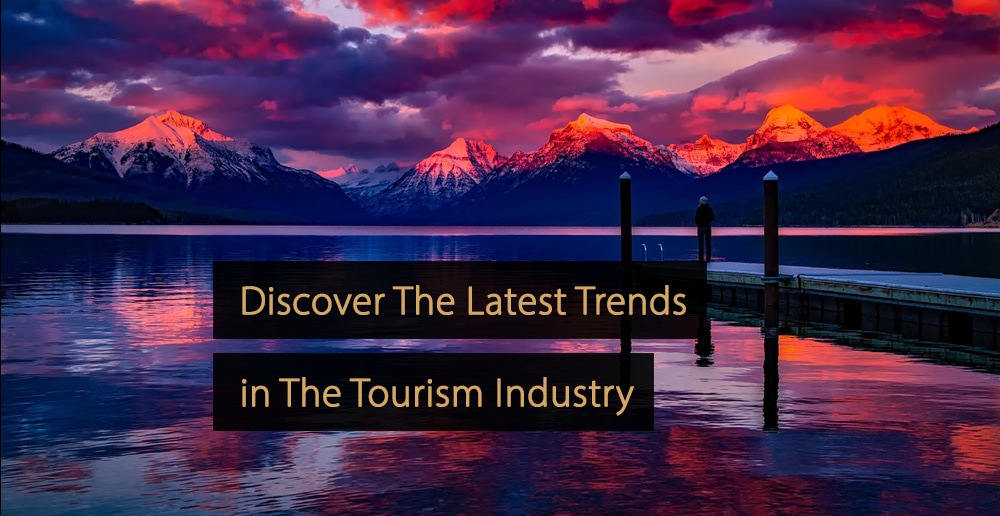
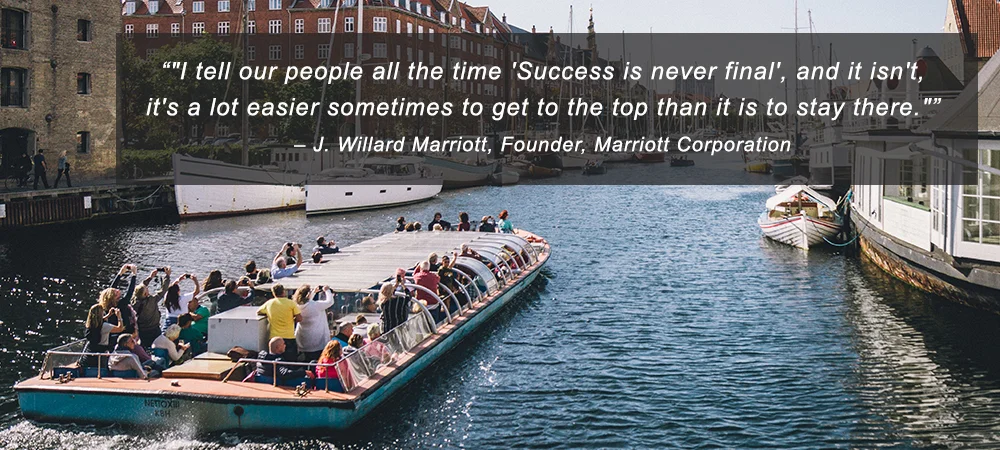
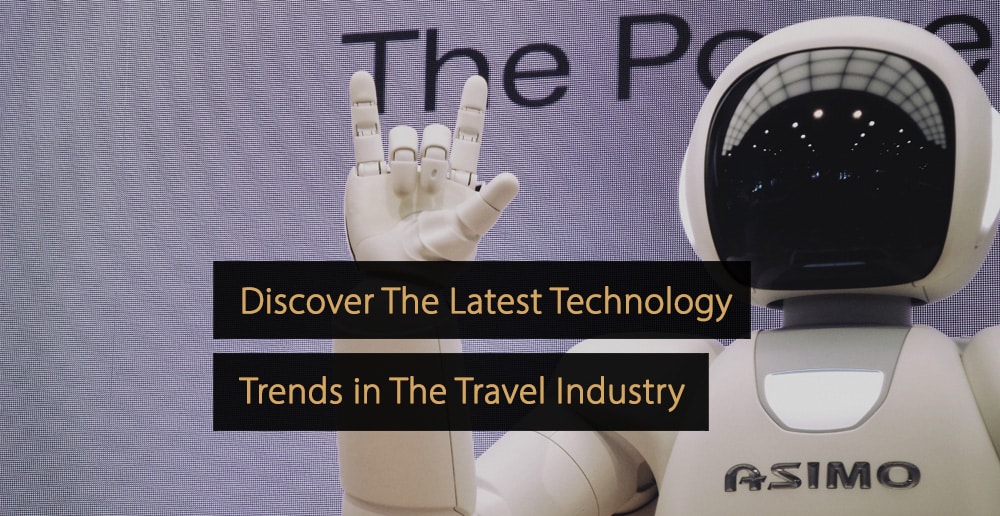

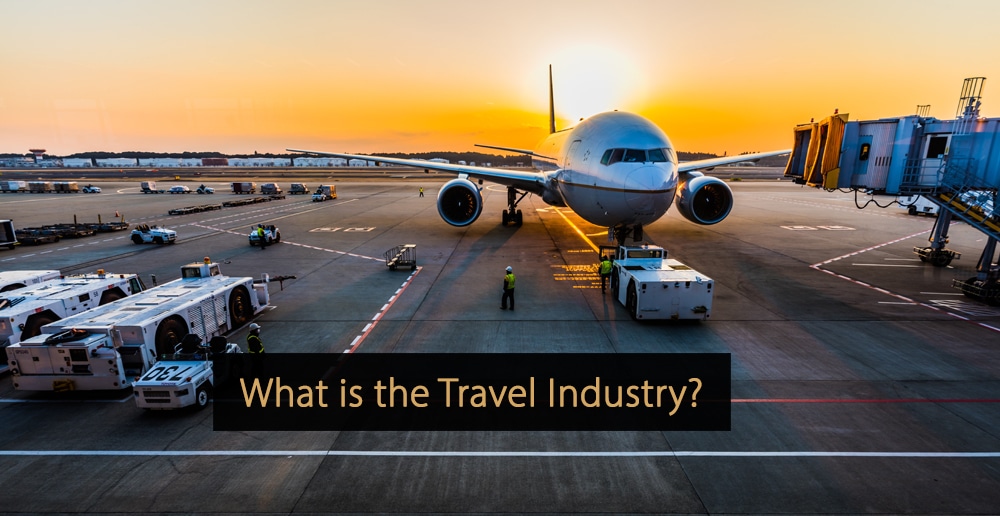
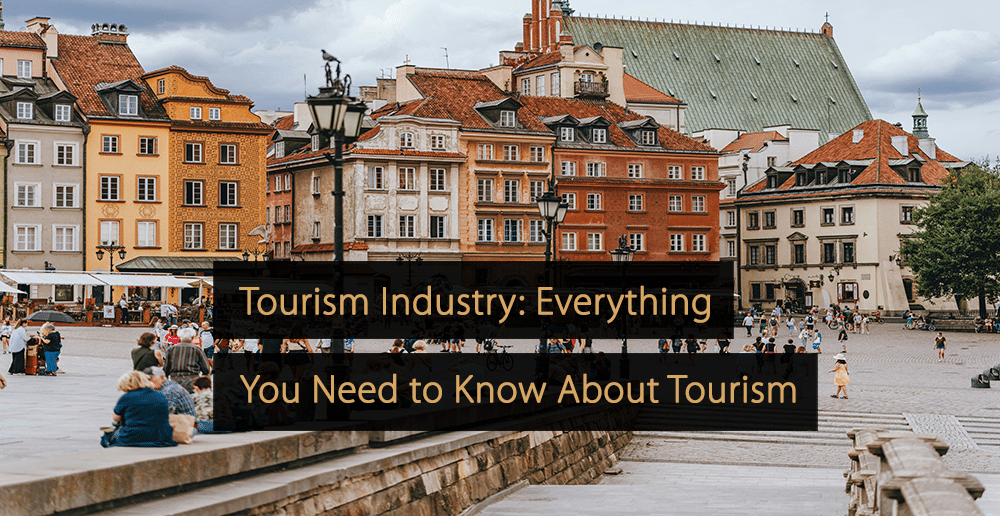

Thanks for this very interesting read. I learned a lot and looking forward to apply these tips for upcoming summer holiday season.
Thank you for all extensive and detailed information, this is really great content!
Very intriguing information, especially how AI can improve operational efficiency.
Thank you very much for sharing all these trends.
Interesting article! Thank you so much for providing these trends.
Very informative and interesting article. It is good to update my knowledge on all new trends in tourism, extremely useful. Thanks for sharing!
This is the first time I have visited this website. It has pretty interesting information about tourism.
Thank you for this article and all provided tourism trends :)
This article was truly worthwhile to read. I wanted to say thank you for all the trends you pointed out about tourism.
Thanks a lot for this valuable information, it’s really insightful.
Thank you editor for piling up all tourism trends.
Thanks for your valuable information.
Thank you so much for providing us with these trends in tourism.
Thanks a lot for the very insightful article about trends in tourism and for providing real-world examples to easily digest the concepts.
Hello everyone. Thank you a lot for this article. The tourism trends are very helpful.
Hello, the amount of information and tourism trends provided on Revfine.com is fantastic. I love it!
Thank you Rosana!
Thank you so much for this very resourceful read. The Video clips make it so rich!